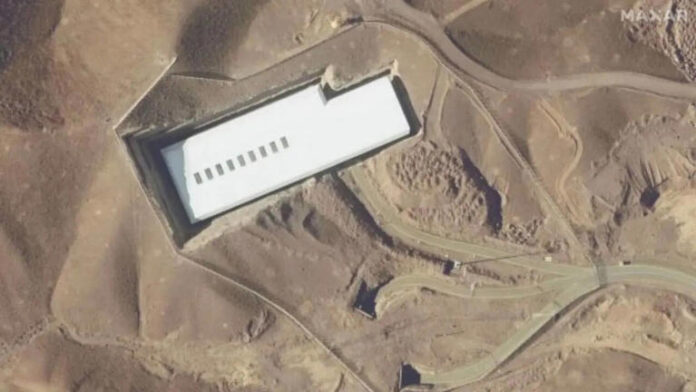Amid soaring tensions between Washington and Tehran, former U.S. President Donald Trump has reportedly approved detailed plans for a potential military strike against Iran but has not made a final decision on whether to follow through, according to CBS News, citing a senior intelligence source.
The target of the proposed strike is said to be Fordo, an underground uranium enrichment facility located deep beneath the mountains near Qom. This site has long been a focal point of international concern over Iran’s nuclear ambitions.
Trump’s hesitation appears to stem from a last-minute strategic calculation, according to sources familiar with the matter. He reportedly delayed the strike in hopes that Tehran might yet agree to abandon its nuclear program.
However, Iranian Supreme Leader Ayatollah Ali Khamenei firmly rejected any overture, delivering a defiant televised address on Wednesday in which he declared that the “Iranian nation will not surrender.”
In response to Trump’s call for what he described as “unconditional surrender,” Khamenei rebuked the idea outright, asserting that any military action by the United States would come at a high cost. “Any U.S. military intervention will be costly,” he warned. “We will never give in to pressure or duress.”
Speaking to reporters the same day, Trump remained noncommittal about his next move. “I may do it, I may not do it,” he said when asked about potential military involvement in Iran. “Nobody knows what I’m going to do,” he added, while brushing off Khamenei’s rejection with a terse, “Good luck.”
The Wall Street Journal was the first to report on the existence of the strike plans, indicating growing deliberations within U.S. defense and intelligence circles over how to respond to what Washington views as Tehran’s increasingly provocative behavior.
On the military front, the conflict appears to be escalating. Israel launched additional preemptive strikes on Iranian missile installations and nuclear sites over the weekend, prompting a retaliatory barrage of hypersonic missiles from Iran.
While Iranian state media claimed success, no serious damage was reported in Israel, according to initial assessments.
Wednesday also marked Khamenei’s first public appearance since the Israeli strikes began. Seated before a large Iranian flag and a portrait of revolutionary founder Ayatollah Ruhollah Khomeini, the Supreme Leader exuded defiance.
Iran’s diplomatic mission to the United Nations lashed out at Trump in a series of posts on X (formerly Twitter), calling him a “has-been warmonger” and rejecting any notion of negotiations under threat. “Iran does NOT negotiate under duress, shall NOT accept peace under duress, and certainly NOT with a has-been warmonger clinging to relevance,” the statement read.
They added: “No Iranian official has ever asked to grovel at the gates of the White House. The only thing more despicable than his lies is his cowardly threat to ‘take out’ Iran’s supreme leader.”
As regional tensions rise and rhetoric on both sides intensifies, the world waits anxiously to see whether Trump will translate his approved strike plans into military action—or continue to hold off in hopes of a diplomatic breakthrough that appears increasingly unlikely.

